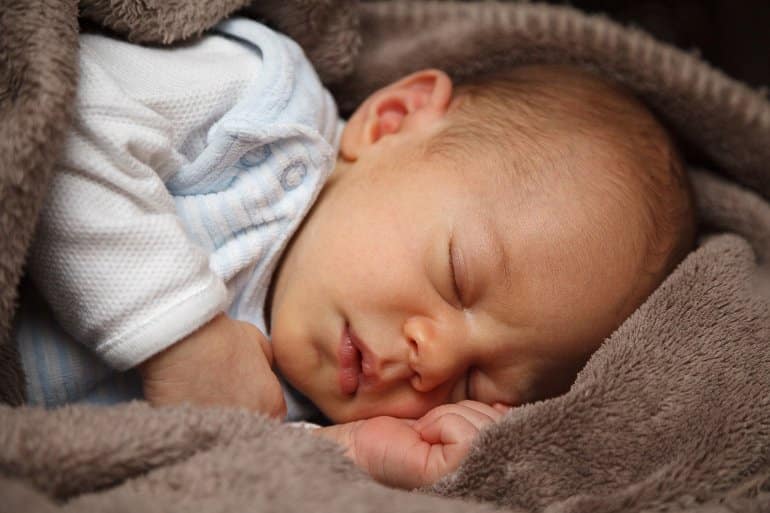Summary: Researchers found the presence of numerous brain asymmetries in brain areas associated with language and visual tasks like facial recognition in newborns. They also discovered the asymmetries in preterm babies were the same as in those born to term. The findings suggest brain asymmetry may be hard-wired and critical for later brain development.
Source: King’s College London
Researchers publishing in Nature Human Behaviour, looked at how different (asymmetrical) the left and right side of babies’ brains were in terms of their shape and patterns of brain activity to establish a benchmark for future studies to investigate how asymmetries relate to brain disorders.
Previous research has shown that people with and without mental health conditions have different brain asymmetries. There is a limited understanding of how asymmetric babies’ brains are at birth, and since babies act differently from adults, and cannot do tasks during MRI scans, this study aimed to understand how asymmetric the brain is at birth, if at all.
For this study, the researchers investigated asymmetries in 442 healthy term-born neonate babies (newborns in the first month after birth) using MRI images that showed the function and structure of the brain, from the Developing Human Connectome Project.
These differences were compared against similar patterns taken from 103 preterm neonates scanned at the same age, as well as 1,110 healthy young adults from the Human Connectome Project.

This study found the presence of many brain asymmetries in the areas responsible for language and vision tasks like face recognition. Moreover, we found that brain asymmetries in babies born early were the same as those in babies born on time.
This is significant, because being born early affects nearly all other aspects of brain development except brain asymmetry, said Logan Williams, Ph.D. student from the School of Biomedical Engineering & Imaging Sciences.
He added, “Our findings suggest that brain asymmetries are hard-wired and are very important for future brain development.”
The study found that neonatal babies’ brains are very asymmetric and show similar patterns to adults. This finding will act as a baseline for future studies that explore brain symmetry and allow scientists to interpret studies where they are investigating changes of brain asymmetry in relation to certain health conditions.
About this neurodevelopment research news
Author: Emma Robinson
Source: King’s College London
Contact: Emma Robinson – King’s College London
Image: The image is in the public domain
Original Research: Open access.
“Structural and functional asymmetry of the neonatal cerebral cortex” by Logan Z. J. Williams et al. Nature Human Behavior
Abstract
Structural and functional asymmetry of the neonatal cerebral cortex
Features of brain asymmetry have been implicated in a broad range of cognitive processes; however, their origins are still poorly understood.
Here we investigated cortical asymmetries in 442 healthy term-born neonates using structural and functional magnetic resonance images from the Developing Human Connectome Project. Our results demonstrate that the neonatal cortex is markedly asymmetric in both structure and function.
Cortical asymmetries observed in the term cohort were contextualized in two ways: by comparing them against cortical asymmetries observed in 103 preterm neonates scanned at term-equivalent age, and by comparing structural asymmetries against those observed in 1,110 healthy young adults from the Human Connectome Project.
While associations with preterm birth and biological sex were minimal, significant differences exist between birth and adulthood.






